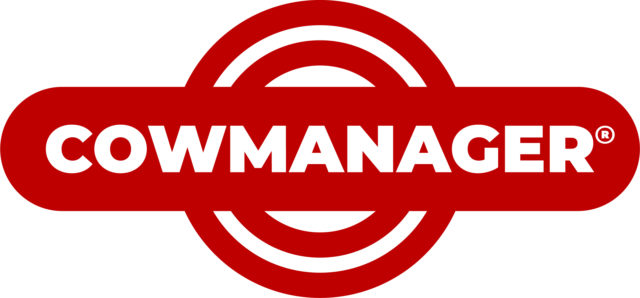Amazon brought its leadership to the food and beverage industry via its acquisition of Whole Foods in 2017. Using this as a springboard, Amazon has launched food models, including Amazon Go that has no lines or cashiers. It is a fully digital grab-and-go model.
Amazon further expanded into the digital grocery space via Amazon Fresh, a delivery and pickup service in select major cities that is available to Amazon Prime members. There are more than 112 million Prime members, and Amazon views them as key targets for its burgeoning foray into the eCommerce grocery business.
One change that has emerged over these last eight months is the rise in consumers’ comfort with online grocery shopping. To put it mildly, eCommerce sales are skyrocketing. It is the fastest-growing channel in the food space.
Before COVID-19 hit, less than 25% of consumers had ordered groceries online. However, almost 50% (45 million consumers) now have ordered groceries this way.
Total eCommerce dollar sales through the start of September were up 63% from the same time period a year ago. Dairy has certainly experienced its share of that lift. Sales of refrigerated milk are up 126%, and natural cheese is up 115% over the same timeframe comparison.
Additionally, an IRI report commissioned by Midwest Dairy found consumers shopping online are satisfied with their experience, as 70% who began purchasing dairy online plan to continue this behavior. While “no contact” was a motivator, factors such as saving time, convenience and enjoying the experience have positioned eCommerce well for the post-COVID world.
Connecting technology and food
Amazon brings a technology view to the grocery category. This is why a team of Dairy Management Inc. (DMI) leaders headed to Amazon’s headquarters in Seattle for a meeting in May of 2019. It wasn’t just an introduction to DMI but an introduction to the dairy industry.
DMI has long had a strategy of ensuring dairy is well positioned to embrace the possibilities created through this growing channel of grocery shopping beyond the bricks-and-mortar store.
Our goal was to inform Amazon about the penetration of dairy, with cheese and milk in more than 90% of U.S. households and ice cream and yogurt in 80%. We showed how dairy is bigger than aisles containing snacks, carbonated drinks and refrigerated meats. We showed the steady per-capita growth of dairy consumption and debunked myths. We showed that when dairy is in the basket, consumers spend $32 more than when dairy is absent.
Finally, our goal was to tell the story behind dairy, where its goodness begins. That’s why Minnesota dairy farmer and DMI board member Charles Krause joined us for this critical first meeting. Amazon isn’t different from many U.S. companies or consumers in that it doesn’t have a direct link to the farm. Charles shared his family’s story, including a powerful video of his dairy, which led to great conversation and dialogue. In fact, he had more questions asked of him than anyone in our group.
The same scenario played out earlier this year when we held a virtual meeting with more new Amazon team members. Wisconsin farmer Daphne Holterman, a recent winner of the Innovation Center for U.S. Dairy’s Sustainability Awards, built upon the foundation started by Charles.
Both changed perceptions about dairy farmers for Amazon.
Since that first meeting, DMI has built a strong relationship where the lines of communication remain open. We are a trusted, “brand-agnostic” dairy category resource for Amazon’s Fresh business that doesn’t require any checkoff funding. They seek our insights – dairy trends, shopping behaviors and category dynamics – to help ensure dairy is effectively merchandised and promoted in the digital landscape.
Goal of driving sales
Best of all, Amazon listens and acts quickly. One example we impacted can be seen on Amazon’s landing page for fluid milk. We know shoppers tend to see fluid milk, flavored milk and lactose-free milk as separate category segments. Yet Amazon didn’t have them broken out separately on the website’s navigation bar. We shared our insights and Amazon now has “flavored” and “lactose-free” milk options on its main dairy page, helping improve the shopping experience for consumers.
We share a common goal of driving sales of dairy, but what separates DMI from other companies Amazon works with is: We aren’t pushing a specific product. We represent all of dairy, so they see us as an organization that can provide a balanced and unbiased look when they seek information.
The checkoff’s role within eCommerce will continue to expand as consumers – especially younger segments of the population – turn more toward this way of food shopping.
It’s important DMI responds to the evolution of the grocery landscape and meeting consumers’ needs, no matter where and how they shop. ![]()
To learn more about your national dairy checkoff, visit U.S. Dairy or send a request to join our Dairy Checkoff Farmer Group on Facebook. To reach us directly, send an email to Talk to the checkoff.
Your Dairy Checkoff in Action – The following update is provided by Dairy Management Inc. (DMI), which manages the national dairy checkoff program on behalf of America’s dairy farmers and dairy importers. DMI is the domestic and international planning and management organization responsible for increasing sales of and demand for dairy products and ingredients.

-
Paul Ziemnisky
- Executive Vice President, Global Innovation Partnerships
- Dairy Management Inc.





